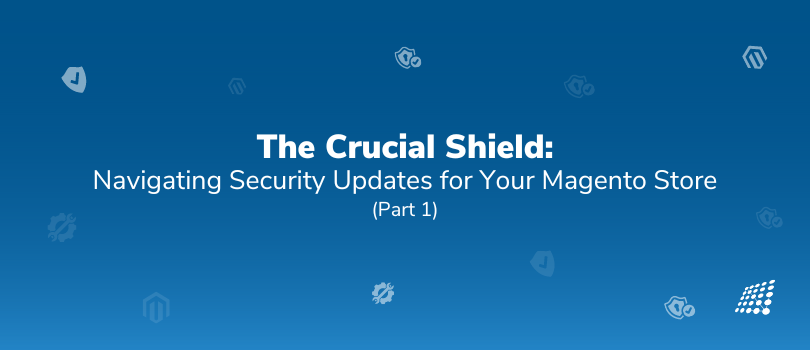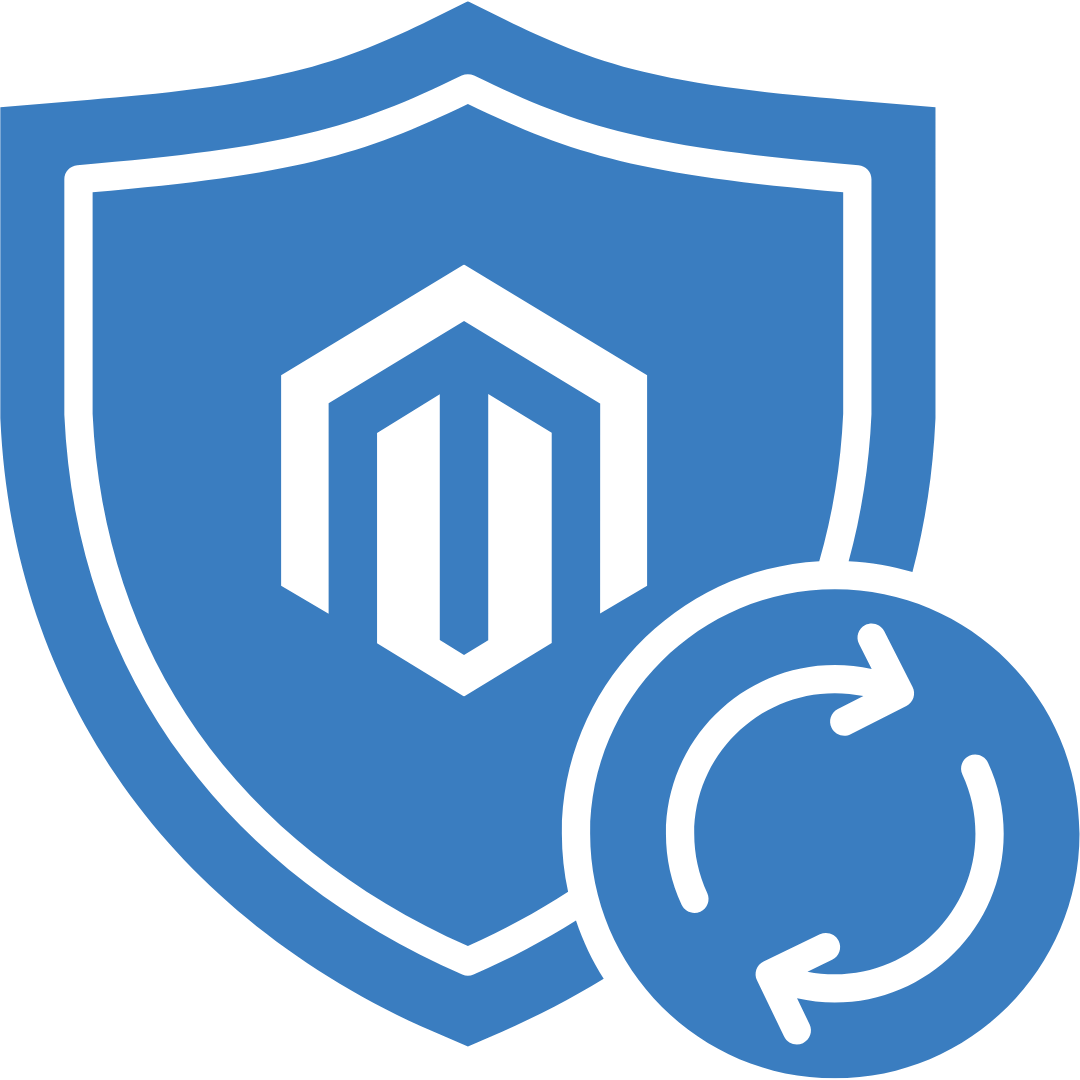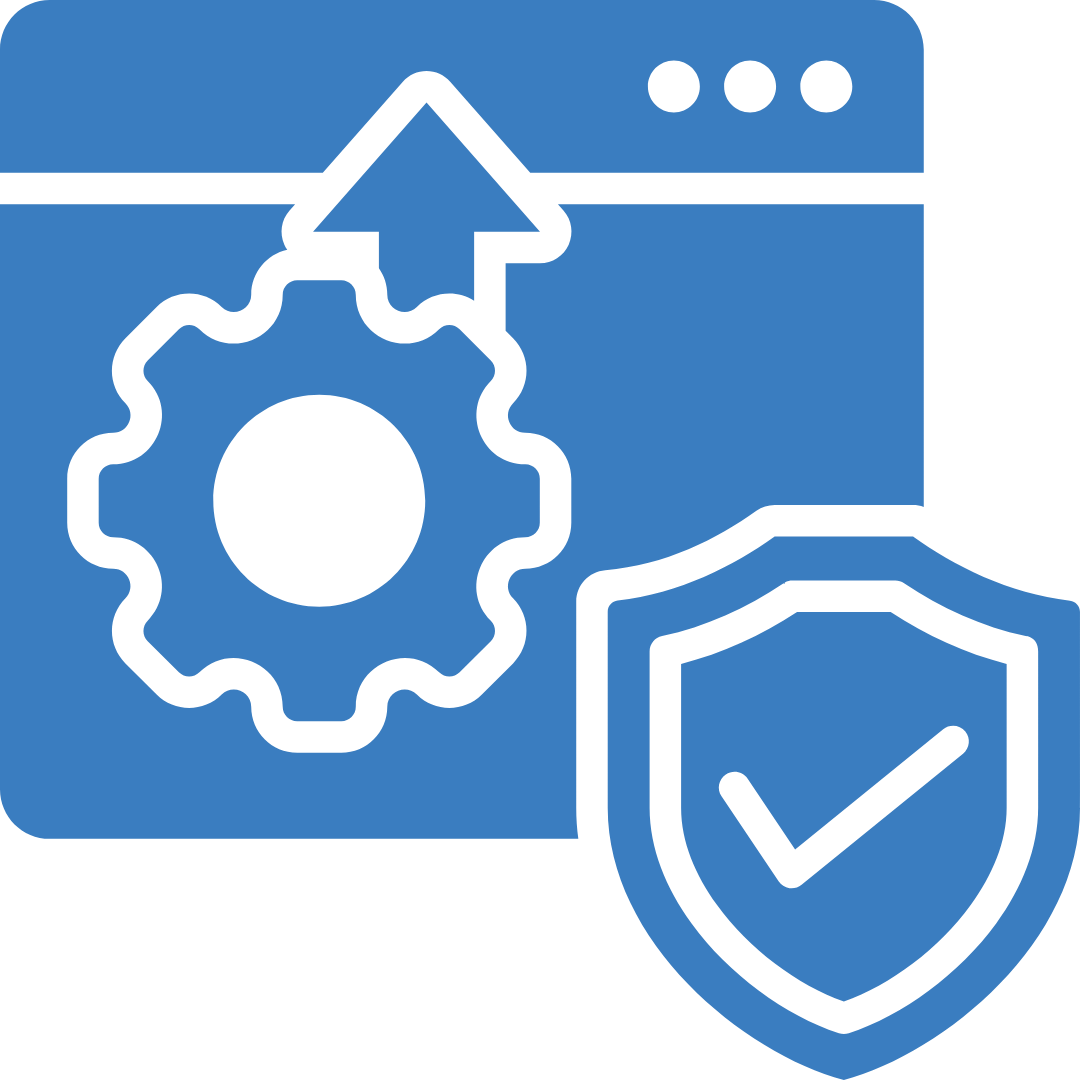The Crucial Shield: Navigating Security Updates for Your Magento Store (Part 1)

The security of your online store is no longer an afterthought, it's an absolute necessity. It’s not an unknown fact that Magento stores, a popular platform trusted by countless businesses to power their e-commerce operations, have been targeted by attackers in the past.
In 2020, 500 Magento sites were hacked by criminals who stole customer payment information in a payment skimmer attack. More recently, in 2022, the CVE-2022-24086, a critical mail template vulnerability in Magento put Adobe and Magento stores at risk.
A security breach can be devastating, causing irreparable damage to brand reputation, data leaks, financial loss, and more! Fortunately, Magento provides a vital line of defense through regular security updates. These updates address known vulnerabilities in the core platform code and extensions, patching the holes that cybercriminals might try to exploit.
In ‘Navigating security updates for your Magento store: Part 1’, we will equip you with the knowledge and tools to navigate the world of Magento security updates so you have the answer to, “How do I ensure the security of my e-commerce website?” We'll delve into these updates, why they're crucial, and how to stay informed about the latest releases. We'll also provide a step-by-step guide on applying updates and implementing best practices for Magento security testing to maintain a robust security posture for your Magento store. You can ensure your online business thrives in a safe and secure environment by prioritizing security and staying up-to-date with Magento's updates.
Understanding Magento Security Updates

Keeping your Magento store secure requires you to stay informed. Magento stores carry loads of sensitive data, from customer information and payment details to product details and intellectual property. A security breach can be damaging. That cyber threats constantly evolve, with hackers devising ever-more sophisticated methods to exploit vulnerabilities in online systems, doesn’t make things easier. The relentless nature of these threats requires constant vigilance.
Think of Magento security updates as patches for your store's armor, constantly reinforcing its defenses against cyberattacks. These updates address flaws and Magento security vulnerabilities in the software that could be exploited by hackers to steal customer data, disrupt operations, or inject malicious code.
Common Vulnerabilities Patched
Imagine a security update like a shield against specific attack methods. Here are some common threats addressed by updates:
- SQL Injection: Hackers might try to inject malicious code into your store's database through forms or search bars. Updates fix these loopholes.
- Cross-Site Scripting (XSS): This allows attackers to inject malicious scripts into your store's pages, potentially stealing data or redirecting users to harmful sites. Updates prevent this.
Types of Security Updates
There are two main types of updates:
- Core Code Patches: These address vulnerabilities in the core Magento platform itself. They're crucial and need to be applied promptly.
- Module Updates: Third-party extensions you use might also have vulnerabilities. Module updates fix these weaknesses.
Severity Levels
Security updates are categorized by severity:
- Critical: These updates address high-risk vulnerabilities requiring immediate action.
- Important: These updates fix significant vulnerabilities and should be applied promptly.
- Moderate: These address medium-risk vulnerabilities that should be addressed within a reasonable timeframe.
- Low: These updates fix minor vulnerabilities, but applying them is still recommended for overall security.
Security Updates vs. Version Upgrades
Don't confuse security updates with version upgrades. Upgrades introduce new features and functionalities to Magento, while security updates focus on fixing existing issues. Both are important, but security updates are essential for maintaining a safe store.
Staying Informed About Updates
Several resources keep you informed about security updates:
- Magento Security Center: This official resource from Adobe provides details about all security updates, including severity level, affected versions, and solutions.
- RSS Feeds: Subscribe to Magento Security Center's RSS feed for automatic notifications about new updates.
- Email Subscriptions: Sign up for email alerts from Adobe to receive updates directly in your inbox.
The Patching Process in a Nutshell
Once notified about an update, the process is usually:
- Download the Patch: Find the relevant patch file from the Magento Security Center.
- Install the Patch: Apply the patch to your Magento store using the appropriate method (manual or composer).
- Verify the Update: Ensure the patch installed successfully and all functionalities work as intended.
By understanding these aspects of Magento security updates, you can keep your store well-protected from evolving cyber threats.
Staying Informed About Security Updates

Staying informed about the latest Magento security updates isn't just a good practice, it's essential if you want to know how to secure a Magento website. Cybercriminals are constantly developing new methods to exploit vulnerabilities, and outdated software is a prime target. By being proactive with security updates and Magento security best practices, you can significantly reduce the risk of data breaches, downtime, and financial losses.
Several resources can keep you in the loop:
- Subscribing to Adobe Security Notifications: Opting for email alerts from Adobe ensures you receive immediate updates about new security vulnerabilities and available Magento security patches.
- Following Magento Security Blogs: Reputable Magento security blogs often provide in-depth analyses of updates, helping you understand the potential impact on your store.
The benefits of this proactive approach are numerous. Applying updates promptly minimizes the window of vulnerability hackers can exploit, preventing potential breaches that can cost your business dearly in terms of customer trust and financial resources.
However, it's crucial to evaluate the potential impact of an update before implementing it on your live store. Security updates can sometimes introduce compatibility issues with existing extensions or themes you use. This is why thorough testing in a staging environment, a replica of your live store, is vital. Here you can identify and address any conflicts before deploying the update to your real store, minimizing downtime and disruption.
Fortunately, you're not alone in this process. The Magento community is vast and supportive. Resources like Magento forums and community support groups can offer valuable insights and solutions if you encounter compatibility issues during testing.
Applying Security Updates: Pre-Update Essentials

How to apply Magento security updates?
Before venturing into the importance of Magento security updates, it's crucial to take some precautionary steps to ensure a smooth and successful process. Here are some key actions to remember:
1. Back Up Your Store – A Safety Net for Unexpected Events
Think of backups as a safety net for your store's data. In the unlikely event of an issue during the update process, backups allow you to restore your store to its previous state. There are two main types of backups:
- Full Backups: This captures everything – your Magento files, database, and media (images, product files). It's a comprehensive safety measure but can be time-consuming for large stores.
- Database Backups: This focuses on the core data of your store, including customer information, orders, and product details. It's a quicker process and ideal for frequent backups.
2. Testing Ground: Utilizing a Staging Environment
Imagine a staging environment as a testing ground for your Magento store. It's a replica of your live store, allowing you to experiment with updates and identify any potential issues before they impact your actual customers.
Here's why a staging environment is crucial:
- Compatibility Checks: You can test the update and see if it interacts negatively with any extensions or themes you use.
- Functionality Testing: Ensure all functionalities of your store, like checkout and product browsing, work seamlessly after the update.
- Risk Mitigation: By identifying and resolving any issues in the staging environment, you minimize the risk of downtime and disruption on your live store.
3. Identifying Potential Conflicts: Scouting for Extension Issues
Security updates are designed to improve Magento's core code, but sometimes, conflicts may arise with third-party extensions you use. Here's how to identify potential issues:
- Review Extension Documentation: Check if the extension developer has released any updates or compatibility information regarding the security patch.
- Consult Community Forums: Magento communities and forums are a valuable resource for identifying known conflicts and finding solutions.
Applying the Update: Tailored Approaches for Open Source and Commerce
The update application process can differ slightly depending on your Magento version (Open Source or Commerce). Here's a breakdown of both methods:
Magento Open Source:
- Download the Patch File: Locate and download the relevant security patch file from the Magento Security Center.
- Apply via SSH or Command Line: Connect to your server using SSH or a command-line tool and follow the instructions provided with the patch file to apply it to your Magento installation.
- Clear Cache: After applying the update, clear your Magento cache to ensure all changes take effect.
Adobe Commerce:
- Utilize Admin Panel: Navigate to the Magento Commerce admin panel and access the "System" menu.
- Apply Patch in "System Update": Within the "System" menu, locate the "System Update" section and follow the on-screen instructions to upload and apply the downloaded security patch.
- Cache Management: Similar to Open Source, remember to clear your cache after applying the update through the admin panel.
Remember: It's vital to back up your store data before initiating any updates, regardless of the application method.
Alternative Methods: While the methods above are common approaches, tools like MagePacker or Composer can also be used to manage updates in some scenarios. However, exploring these alternative methods is best done in consultation with a qualified Magento developer.
Applying the Security Update

Once you've prepared your store and identified potential conflicts, it's time to apply the security update. Here's a simplified overview of the process:
1. Downloading the Patch
Head to the Magento Security Center on the Adobe Commerce Help Center. Locate the specific update you need based on your Magento version and severity level. The Center provides download links for the patch files.
2. Applying the Patch
The application process depends on your Magento version:
- Magento Open Source: You'll likely be applying the patch manually. This may involve uploading the patch file to your server and applying it via SSH or a command-line tool. Specific instructions are usually included with the patch download.
- Adobe Commerce: The process is often more streamlined. You can typically apply the patch directly within the Magento Commerce admin panel. Navigate to the "System Update" section and follow the on-screen instructions to upload and apply the downloaded patch file.
3. Verifying the Update
Don't assume success just yet! After applying the patch, it's crucial to verify its successful installation and functionality. This involves checking system logs for any error messages and testing core functionalities of your store, like product browsing and checkout, to ensure everything works as expected.
The risks of neglecting Magento security updates can be catastrophic. Stick around for Part 2, where we talk about post-update verification and troubleshooting Magento security updates, ongoing security maintenance for Magento, and advanced security considerations. For further details or custom Magento development services, get in touch with our experts.

At the Heart of SJ Innovation: How we Coordinate our International venture

FRIDAY FUN ACTIVITY : A MUST AT EVERY WORKPLACE


